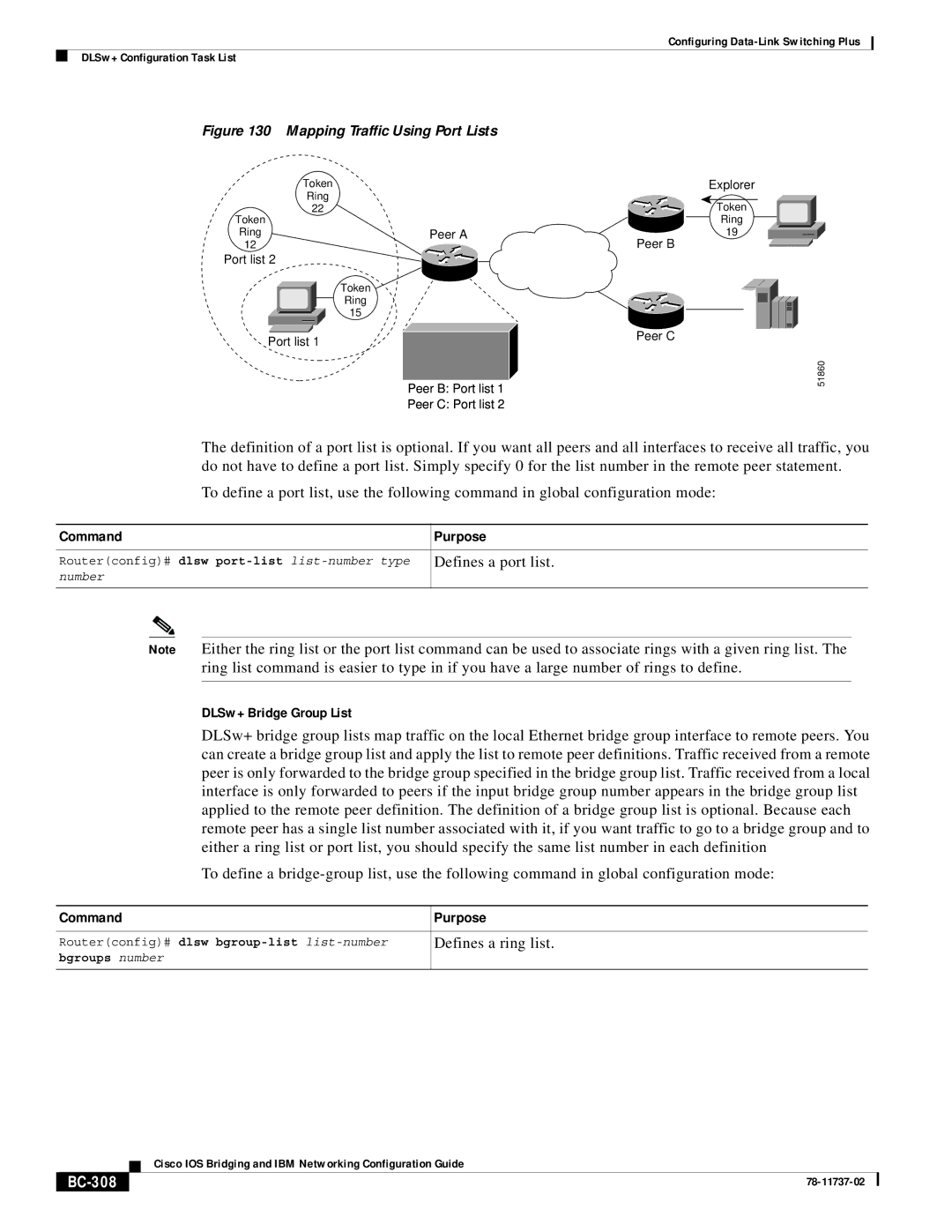
Configuring
DLSw+ Configuration Task List
Figure 130 Mapping Traffic Using Port Lists
Token
Ring
22
Token
RingPeer A
12
Port list 2
Token
Ring
15
Port list 1
Peer B: Port list 1
Peer C: Port list 2
Explorer
Token
Ring
19
Peer B
Peer C
51860
The definition of a port list is optional. If you want all peers and all interfaces to receive all traffic, you do not have to define a port list. Simply specify 0 for the list number in the remote peer statement.
To define a port list, use the following command in global configuration mode:
Command | Purpose |
|
|
Router(config)# dlsw | Defines a port list. |
number |
|
|
|
Note Either the ring list or the port list command can be used to associate rings with a given ring list. The ring list command is easier to type in if you have a large number of rings to define.
DLSw+ Bridge Group List
DLSw+ bridge group lists map traffic on the local Ethernet bridge group interface to remote peers. You can create a bridge group list and apply the list to remote peer definitions. Traffic received from a remote peer is only forwarded to the bridge group specified in the bridge group list. Traffic received from a local interface is only forwarded to peers if the input bridge group number appears in the bridge group list applied to the remote peer definition. The definition of a bridge group list is optional. Because each remote peer has a single list number associated with it, if you want traffic to go to a bridge group and to either a ring list or port list, you should specify the same list number in each definition
To define a
Command | Purpose |
|
|
Router(config)# dlsw | Defines a ring list. |
bgroups number |
|
|
|
| Cisco IOS Bridging and IBM Networking Configuration Guide |
|
